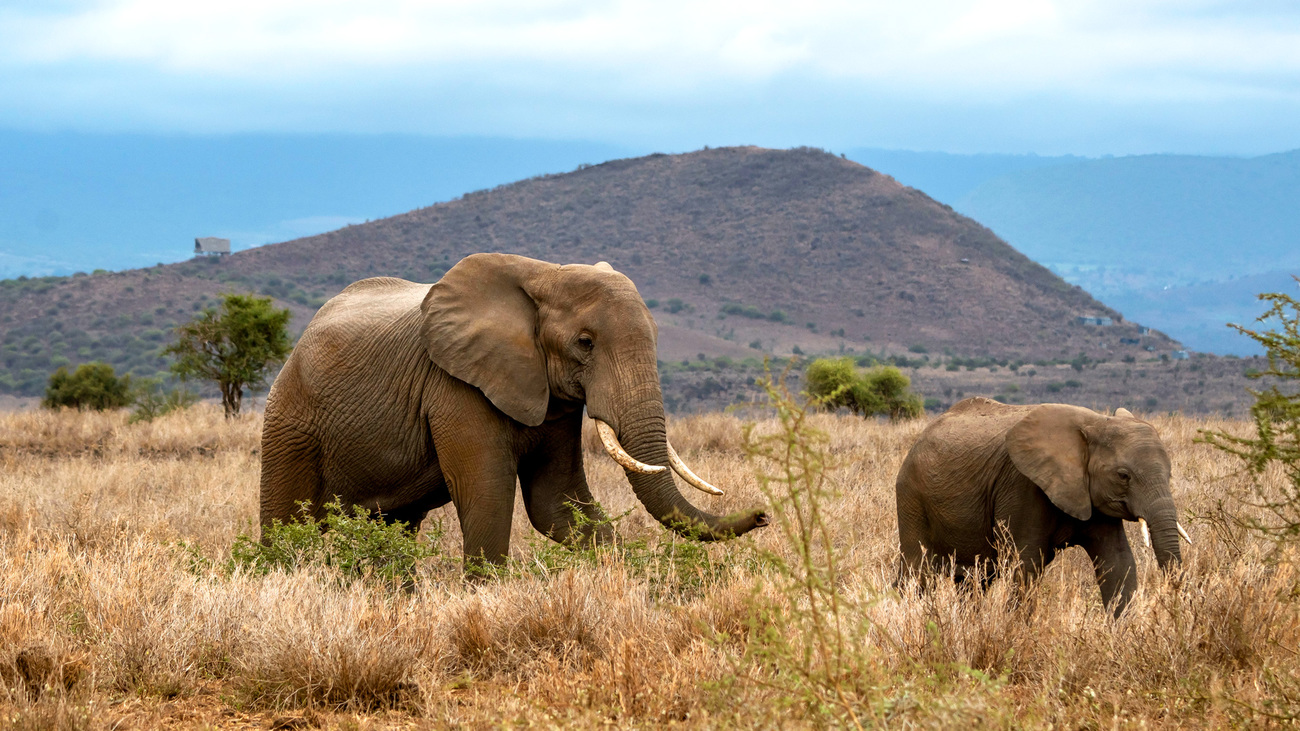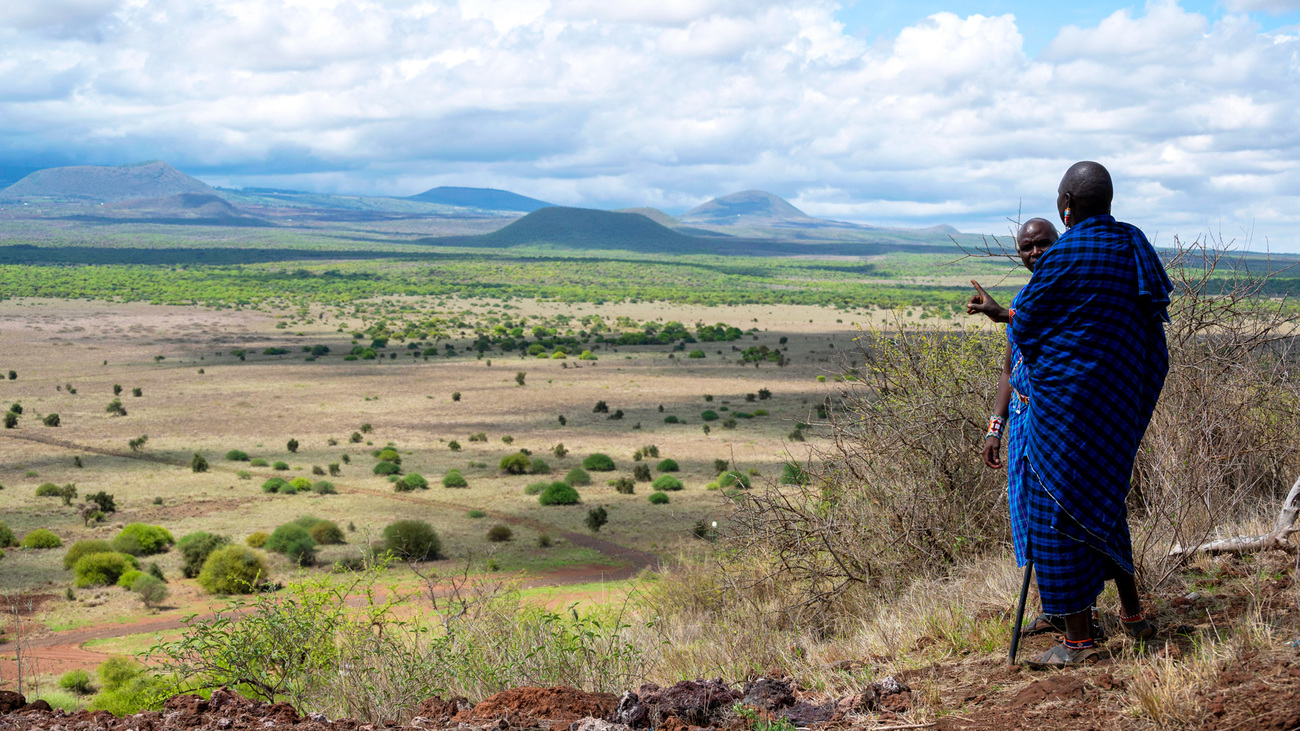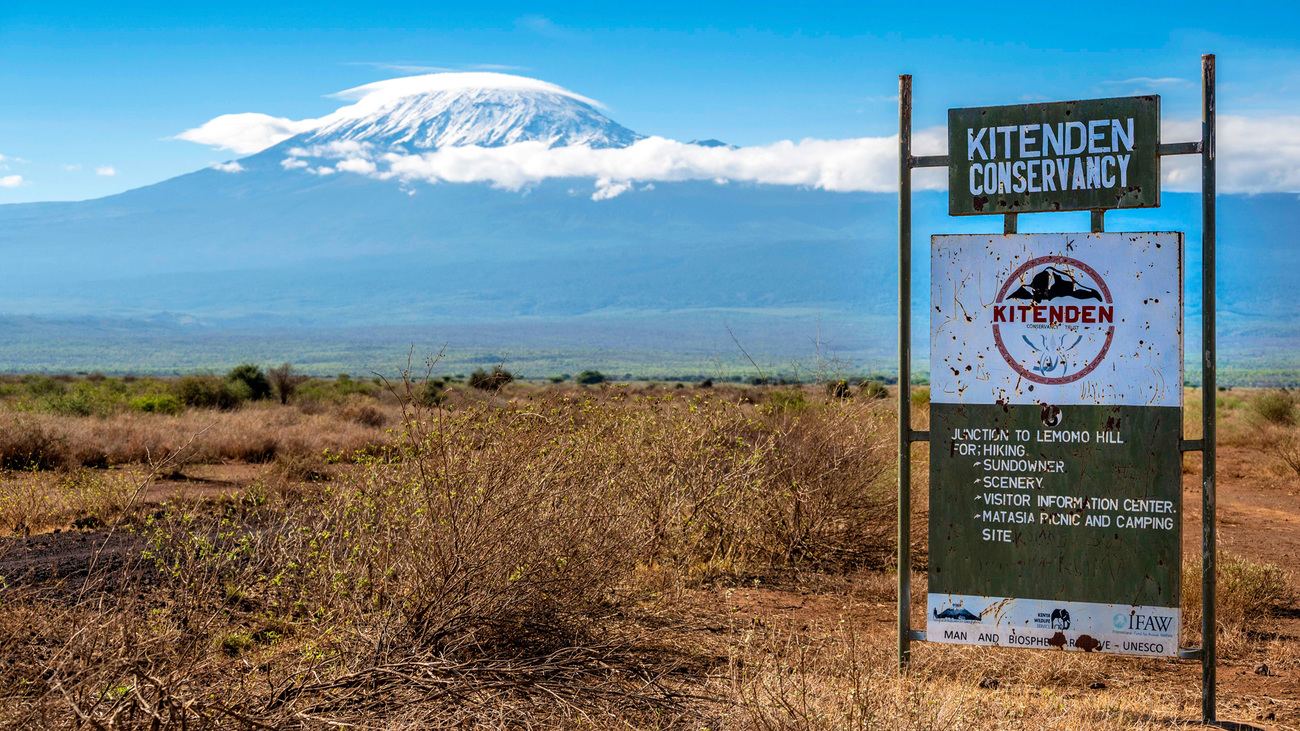how IFAW negotiated a new lease of life for Kenya’s elephants
how IFAW negotiated a new lease of life for Kenya’s elephants

Written by Edward Indakwa, environmentalist and former deputy managing editor with the Standard Group in Kenya.
Nestled between Kenya’s Amboseli National Park and Tanzania’s Mt Kilimanjaro National Park lies a sliver of land known as the Kitenden Corridor. This land is vital for the Maasai and elephant communities who share the space.
But an increase in droughts, agriculture, and human and livestock populations in the area has also led to an increase in conflict between the two communities.
Kitenden is a critical space because it is a daily dispersal area for Amboseli elephants. They spend the day in the park because it has water, and they retreat to Kitenden at dusk in search of fodder and saltlicks. Importantly, it is also a migratory route to the bigger Tsavo and Mt Kilimanjaro National Park ecosystems.
That’s why IFAW has spent over a decade working with the Maasai community to turn parts of the Kitenden Corridor into the Kitenden Conservancy.
This is the story of how an ambitious IFAW vision has grown into a benchmark for securing conservation areas by leasing land from the communities who own it.
crisis looms for Amboseli elephants
Amboseli National Park is part of a vast, cross-border wildlife ecosystem about 200 kilometres south of Nairobi. An oasis supporting over 1,800 elephants and other megafauna in the dusty shadows of Mt Kilimanjaro, it is a UNESCO Man and Biosphere Reserve and the only national park in Kenya established through negotiations with community landowners.
The park’s elephants have thrived in this small, semi-arid landscape. Water from seasonal swamps sustains them, and the community lands provide safe and secure spaces to graze.
But when IFAW started work in Kitenden in 2012, land use changes and climate change had taken a toll. Crisis loomed for the park and its fragile habitat.
Julius Cheptei, a retired Kenya Wildlife Service assistant director, was Amboseli chief warden at the time. He explains, ‘Only less than 10% of Amboseli National Park is viable for conservation. It cannot support the park’s elephant population without the dispersal spaces and migration corridors on community-owned land—especially with droughts becoming more frequent and prolonged as a result of climate change.’
the problem with farmland around Amboseli
Amboseli is surrounded by the Olgulului-Ololarashi Group Ranch, owned by the Maasai community. The community subdivided the land into 10-acre lots, giving owners individual titles with leeway to sell or lease their land to agricultural investors. Dispersal land and migratory corridors risked falling to agriculture—2,000 acres were already gone.
But elephants don’t stop migrating just because their routes have become farmland. It’s more likely that people will lose their crops or suffer damage to their homes and corrals, putting their livelihoods—and even their lives—at risk. And that can lead to retaliation against the creatures.
‘An ecological disaster was imminent,’ says Amboseli Project Manager Evan Mkala.
‘Fortunately, the leadership of the Olgulului-Ololarashi Group Ranch understood when we explained that agriculture, while seemingly better paying on the surface, only presented short-term gain,’ he continues.
‘Amboseli soils are loose, volcanic, and prone to leaching. Farmers, most of them investors from urban areas, would have degraded the land and moved on when profits dipped, leaving landowners empty-handed.’

finding a solution
IFAW presented an alternative: leasing the land for conservation.
IFAW’s model is tailored to improve people’s livelihoods while investing in infrastructure to make Kitenden a fully community-owned and -managed wildlife conservancy.
The lease agreement promised tourism revenue for landowners in the long term and secures Kitenden as an open, safe, and secure space for elephants.
but would landowners buy in?
Julius Cheptei says it was a hard sell. ‘When I reported to Amboseli as senior warden, what immediately caught my attention was the tension between my staff and the community. The Maasai were angry and frustrated by human-wildlife conflict incidents. This animosity made it difficult for my staff to engage with or associate with the community.’
Success came through extensive discussions with the group ranch—from the leadership to individual members—and by finding a meaningful project to show them the lease programme’s potential.
That project was rehabilitating a dilapidated, 50-year-old water pipeline stretching from the depths of Amboseli park to the group ranch.
Project Manager Evan Mkala explains, ‘As an incentive for hiving Amboseli off a community-owned game reserve—where the Maasai could graze and water their livestock—to a protected national park, a 90 kilometre pipeline was built in 1974 to pump water from springs in the park for use by the community in the group ranch. But the pipeline had fallen apart over the years, and the community suffered for want of water for domestic and livestock use.’
By spearheading the rehabilitation of this pipeline, IFAW won the community’s trust.

from leasing land to changing lives
What followed was a year-long series of spirited meetings between IFAW and the leadership of the group ranch and the community’s eight clans. Finally, approximately 9,000 landowners attended an annual general meeting where IFAW’s five-year lease agreement was presented. Around 1,600 group ranch members signed up. Another thousand signed up when the lease was renewed in 2017.
Together, they secured 26,000 acres for conservation.
The US$1.2 million per year lease agreement included scholarships for bright students from the community, a management plan, livelihood projects for women, and employment for community game scouts—including Team Lioness, one of the first all-women community wildlife ranger units in the world.
IFAW also partnered with the Kenya Wildlife Service to establish park infrastructure for wildlife conservation and security.
building resilience in the community
IFAW worked with a local bank to provide financial literacy within the community by driving bank officials into the villages to open bank accounts, so each landowner could access their lease cash without intermediaries.
The team also set up a governance structure, training elected community leaders to manage the conservancy under a board of trustees.
Bernard Tulito, who was born and raised in Amboseli and has been IFAW’s Community Liaison Officer for the Amboseli project since 2012, coincidentally also studied for a diploma in wildlife conservation and management through an IFAW scholarship. He says 90% of the first scholarship beneficiaries have secured employment and that this, together with livelihood projects, is making the community more resilient to droughts.
is IFAW’s Kitenden a model for conservation?
IFAW’s lease model was a ground-breaking initiative that is today regarded as the benchmark for community conservation.
‘The Olgulului-Ololorashi Group Ranch is about four times bigger than Amboseli National Park,’ says Julius Cheptei. ‘Kitenden is evidence that we can create four community-owned “Amboselis” out of the group ranch, each charging visitors US$40 in tourism fees and accruing other benefits, such as scholarships and livelihood projects to uplift the community.’
Evan Mkala believes the Kitenden lease agreement is a game changer because it proves that subdivision of community land next to national parks can be positive. It’s an opportunity to turn individual holdings into community-owned wildlife conservancies, giving each titleholder ownership, responsibility, and a stake in the management of the ecosystem.
But perhaps the best proof is the fact that thousands more landowners signed the agreement in 2021, bringing the total conservation area to over 55,000 acres.
Related content
Our work can’t get done without you. Please give what you can to help animals thrive.